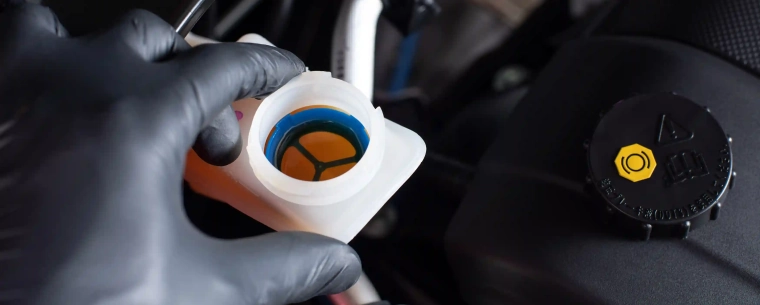How to Check Your Brake Fluid Levels
Published on: Monday, 08 January 2024 | Author: Jack Dreyer
Along with your car’s tyres, your car’s brakes are arguably the most important components. If your engine breaks, if your headlights blow, if your suspension cracks, you may be in a spot of real trouble – but you’ll always be able to stop. If your brakes break, you can very quickly be in a seriously life threatening situation.
So making sure your brakes are always in the best condition is crucial in order to keep yourself and other road users safe at all times. Making sure you have enough brake fluid is therefore just as important as making sure you have enough depth on your brake pads.
What is brake fluid for?
We won’t get too into the technical elements of how brake fluid works here but, essentially, brake fluid is special fluid that fills all of your brake lines. Because you can’t really compress fluids (at least in real-world situations), it’s the perfect way to transfer the power from your foot to the brake calipers.
You press down the brake pedal and the fluid within the brake lines moves just enough to clamp the brake calipers together – which causes the brake pads to hold onto the brake disc.
Why do you need to check your brake fluid levels?
Unlike your coolant reservoir or your screen wash fluid, the level of brake fluid shouldn’t really change at all – but you need to check the level for two main reasons:
- To see that it hasn’t dropped
- To see that it hasn’t risen.
Both of these symptoms indicate other problems for different reasons and have different remedies. We’ll get on to those shortly but, first, let’s look at how to actually check the fluid itself.
Where to find the brake fluid reservoir
The brake fluid reservoir is, as the name suggests, the reservoir for brake fluid – it’s almost always on the driver’s side of the car because the brake master cylinder is usually right next to the steering column.
The reservoirs are usually made of plastic (of different colours but usually either an opaque white or a silver colour) and often have a lid with a stylised, hexagonal brake rotor icon – this icon looks quite like a Stop sign.
Before you actually take the lid off, be sure to be stopped on a level surface with the engine cold. Brake fluid can get really hot and pressurised so taking the lid off when the car’s just been running can be dangerous!
When you take the lid off, the brake fluid should be a light golden brown colour and the level should be between the min & max symbols on the side of the reservoir.

What if my brake fluid level has dropped?
The level of brake fluid usually drops because of a leak in the system. In the best situations, the leak is just at the seal around the reservoir lid, but if your reservoir is largely empty then you likely have a serious leak somewhere in the brake lines.
In this instance, it’s best to call for breakdown assistance because it’s dangerous to drive with a big leak in the brake lines. You can’t just top up an empty brake reservoir because the way the hydraulic systems are designed would leave your brakes ineffective – in short, you’d have a lot of air below the fluid level in your brake lines, so the brakes wouldn’t compress enough.
Even if you could pressurise the brake lines properly, the leak could quickly empty them again while you’re on the road.
If the level of the fluid is just below the minimum line, then you can top up the fluid slightly in order to see you to where you need to go – but we advise you take your car to your local Tyre Pros centre as soon as possible because it’s likely that there’s a small leak somewhere.
What if my brake fluid level has risen?
In order to brake, your brake pads, brake discs, and calipers need to provide a lot of friction. The byproduct of all this friction is a great deal of heat – and this can actually boil the brake fluid inside the lines!
When the fluid boils, it creates air bubbles that can be compressed – so the hydraulic line becomes less effective (or entirely unresponsive) until the fluid has cooled enough. This most often happens after long downhill lengths of road with the brakes engaged.
So what does this have to do with the brake fluid level rising? Well, over time, moisture can be drawn into the brake lines from slight weeps in seals – and the more water that gets into the brake fluid, the sooner the brakes boil.
This can actually cause your brake fluid to boil dry in extreme cases, but a raised level of fluid indicates that water has been absorbed into the lines. This is the better of two options as it won’t immediately render your brakes unusable, but you should still drive and brake carefully because of the likely reduced boiling point of the fluid.
Trust the experts
Brakes and brake lines are one system where it simply doesn’t make sense to leave to chance – trust the experts at your local Tyre Pros centre to check & maintain your brake health with affordable fluid replacements.




